Jade: Successful Love
- Details
- Written by AndEl
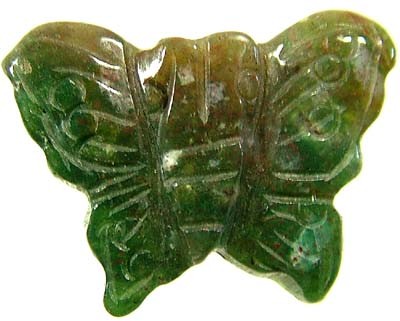
Jade is an ancient stone that has historically been used to attract love. Carved into a butterfly, in China it is a powerful symbol used to draw love. It is believed that Jade can protect one from evil and bring good luck. People have been said to escape accidents because they had a piece of Jade on them. In some of these cases, the Jade piece broke, leaving the person unharmed.
Jade is frequently used in Chinese alchemy and medicine. The Chinese believe Jade has the ability to confer immortality, eradicate shortness of breath and thirst, as well as improve the health of the heart, kidneys, lungs and throat. Some people believe that scars on the face and body can be removed if constantly rubbed with a piece of white Jade.
Jade articles have been used by both the living and the dead. "The living wear Jade as a symbol of their mortal integrity, and Jade accompanies the deceased to comfort their souls". Sacrificial utensils made of Jade were used for offerings to ancestors and in ceremonial respect to the gods of heaven and earth.
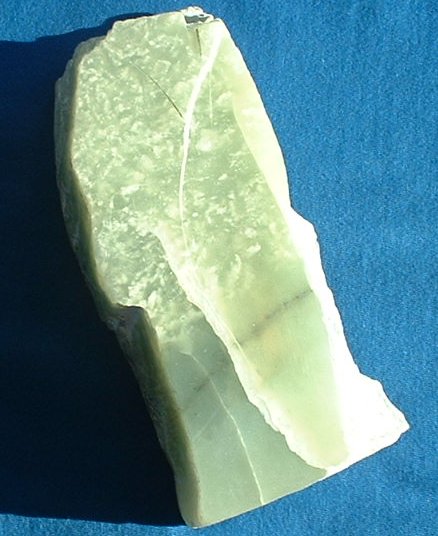
Jade Healing Properties
The soothing green color of jade makes it a wonderful healing stone. It helps the body in self-healing while working through underlying, non-physical reasons for a precipitation for disease.
Jade is a name applied to gem quality forms of two minerals; Jadeite and Nephrite. The Nephrite Jade is actually derived from the Greek word for kidneys and is still a remedy among healers for Nephritic Colic. It can stimulate white blood cell and adrenaline production, which could account for its long association with sports. Eastern athletes believe it can darken in times of superior fitness and lighten when illness comes.
It is particularly helpful for:
- Kidney
- Heart
- Stomach
- Immune system
- Thymus
- Nervous system
Jade aids the body’s filtration and elimination organs.It is excellent for treating kidney problems and adrenal glands. Jade removes toxins, rebinds skeletal and cellular systems, and heals stitches. It assists fertility and childbirth. Jade balances body fluids.
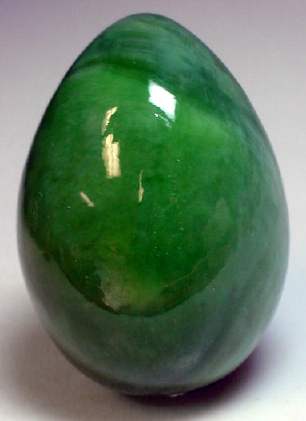
Mental
| Stability | Tranquility | Balance | Peace |
| Harmony | Moderation | Perspective | Longevity |
| Fertility | Serenity | Wisdom | Practicality |
Jade encourages practicality, wisdom, mental peace and tolerance of others. It can rejuvenate during periods of stress, reduce fears, banish negative thoughts and increase a person’s capacity for giving and receiving love. Jade makes a good worry stone and is often used in rosaries.
In addition to the generic healing properties of Jade, specific forms and colours have additional attributes:
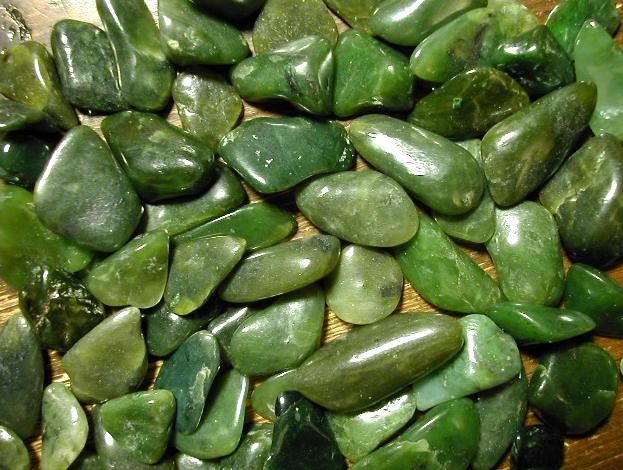
Jade Associations:
Chakras - Heart Chakra
Zodiac - Aries, Taurus, Gemini, Libra
Green Jade
Chakras - Heart Chakra
Planet - Mercury
Typical colour - Green
Green Jade is for the management of passion and heart feelings.
Yellow Jade
Chakras - Solar Plexus Chakra
Typical colour - Yellow
Yellow Jade is energetic and stimulating, yet mellow. It brings joy and happiness. Teaches the interconnectedness of all beings. Yellow Jade aids the digestive and elimination systems of the body.
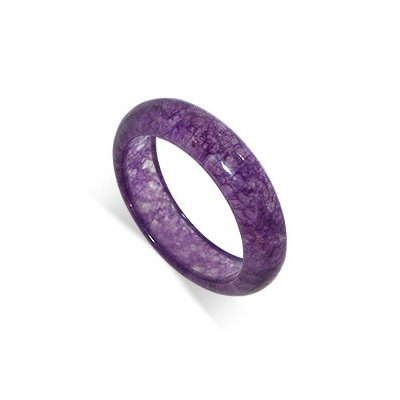
Other Colours:
Blue Jade: Meditation
Brown Jade: New phase in life
Lavender/Mauve Jade: Repair a broken heart
Red/Pink Jade: Generate emotional energy
White/Cream Jade: Problem-solving
Jadeite
Zodiac - Aries
Nephrite Jade
Zodiac - Libra
Jade is a 12th Anniversary gemstone.
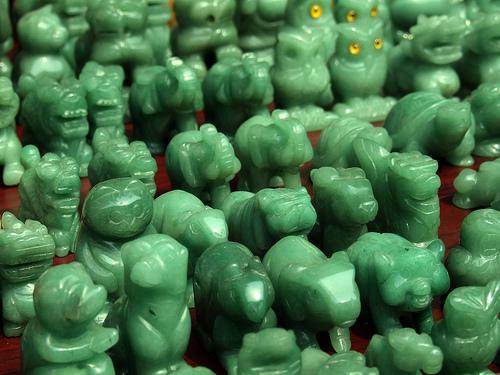
Jade is a symbol of serenity and purity. It signifies wisdom gathered in tranquility. It increases love and nurturing. A protective stone, Jade keeps the wearer from harm and brings harmony. Jade attracts good luck and friendship. It stabilises the personality and promotes self-sufficiency. Soothes the mind, releasing negative thoughts. Stimulates ideas. A “dream stone”, Jade brings insightful dreams. It aids emotional release, especially of irritability. Jade encourages you to become who you really are.
Jade can be used to bring money into your life. Create a positive attitude towards money and visualize yourself using money creatively and productively while holding the stone in your power hand. When making an important business decision, use the prosperous energies of jade by holding it while contemplating your course of action. Jade strengthens your mental faculties and assists in clear reasoning.
Jade is also a protective stone, guarding against accidents and misfortune. Place a piece of jade between two purple candles and let the candles burn for a short while. Then carry the jade with you as a protection amulet.
Symbol of successful love
A butterfly carved from jade holds a special romantic significance. Ancient Chinese legend tells of a youth who wandered into the garden of a wealthy mandarin in pursuit of a multi-colored butterfly. Instead of being punished for trespassing, his visit led to marriage with the mandarin's daughter. In China, Jade is an ancient stone that has historically been used to attract love. Carved into a butterfly it is a powerful symbol used to draw love.
Today, a jade butterfly symbolizes successful love.
Mineral Properties
|
CHEMISTRY: Jadeite, NaAlSi2O6. Nephrite, Ca2(Mg,Fe)5(Si4O11)2(OH)2
CRYSTALLOGRAPHY: Monoclinic, though usually microscopic. REFRACTIVE INDEX: Jadeite 1.64 - 1.667. Nephrite, 1.600 - 1.641 HARDNESS: Jadeite 6.5 - 7. Nephrite, 6 - 6.5 SPECIFIC GRAVITY: Jadeite 3.25 - 3.36. Nephrite, 2.90 - 3.02 CLEAVAGE: None HEAT SENSITIVE: No WEARABILITY:* Excellent
SPECIAL CARE INSTRUCTIONS: None ENHANCEMENTS: Dying, occasional. Wax impregnation, occasional.
*Wearability is graded as Excellent, Very Good, Good, Poor, and Forget It! |
The definition "jade" is used to define two minerals of similar appearance but different chemical composition: nephrite, a calcium- magnesium silicate, and jadeite, a silicate of sodium and aluminum.
Both minerals are found in a wide range of shades of green, brown, yellow, grey and pink and may be either translucent or opaque. They may be milky or cloudy in appearance and sometimes speckled with tiny black spots.
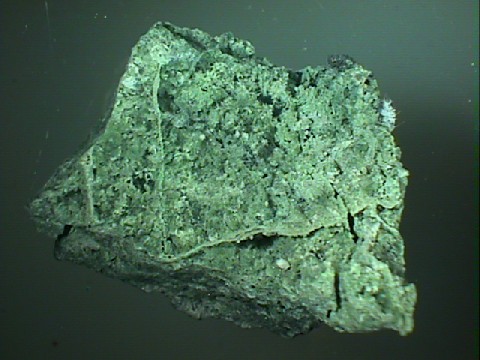
The most prized of the jades, the so-called "Chinese jade" (jadeite) is emerald green and so beautiful and rare that it has become exorbitantly expensive. In fact, jade is a good investment only if purchased at a reasonable price. A sound policy is never pay more for Chinese jade than you would for an emerald.
Jade is a name that was applied to ornamental stones that were being brought to Europe from China and Central America. It wasn't until 1863 that it was realized that Jade was being applied to two different minerals. The two minerals are both exquisite for the purposes that jade is put to task and are hard to distinguish from each other. So what to do? Leave it alone and call them both Jade!
Jadeite is almost never found in individual crystals and is composed of microscopic interlocking crystals that produce a very tough material. Nephrite is actually not a mineral, but a variety of the mineral actinolite. The nephrite variety is composed of fibrous crystals inter-twinned in a tough compact mass. Other actinolite varieties are quite different from nephrite.
The toughness of jade is remarkable. It has a strength greater than steel and was put to work by many early civilizations for axes, knives and weapons. It was later that jade became a symbolic stone used in ornaments and other religious artifacts during the eons.
Today jade is still valued for its beauty. Its many colors are appreciated, but its the emerald green color that jadeite produces so well, that is highly sought after by artwork collectors. This emerald green jade called "Imperial Jade" is colored by chromium. Other colors are influenced by iron (green and brown) and manganese is thought to produce the violet colors. Nephrite is usually only green and creamy white, while jadeite can have the full range of jade's colors.
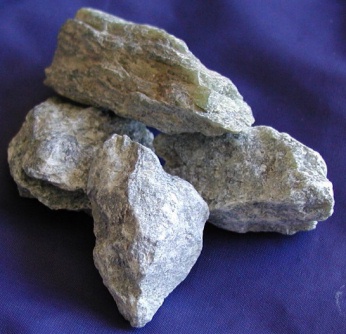
History of Jade
Jade has been known for more than 7000 years. The name Jade goes back to the time of the Spanish conquest of Central and South America and derives from “piedra de ijada,” hip stone, as it was seen as a protection against and cure for kidney diseases. Because of its beneficial effect on the kidneys, the stone was also known as “Lapis Nephriticus”. It wasn’t until 1863 that mineralogists in France discovered that Jade consists of two separate, distinct minerals, Jadeite and Nephrite. Jadeite is very tough and resistant because of its tight growth of tiny interlocking grains. Nephrite, a variety of the mineral Actinolite, is even tougher, due to its composition of fibrous crystals inter-twinned in a tough compact mass.
Today Jade is highly valued for its beauty. Its many colors are appreciated, but it is the emerald green color of Jadeite that is highly sought after by collectors. As jewelry stone Jade is used for pendants, necklaces, bracelets, rings and earrings.
Description
Jade is the term applied to gem quality forms of the minerals Jadeite and Nephrite. Jadeite is the harder of the two; it is usually used in jewelry production. Nephrite is slightly softer and is often veined; it is used in carvings, for making beautiful bowls and vases. These minerals are similar in appearance and a distinction between the two often was not made. But, because of its more intense color and translucency, Jadeite now brings higher prices and is thought to be the true Jade.
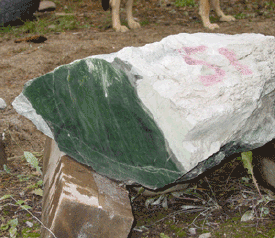
In order for the Jadeite and Nephrite to be gem quality, they must be composed of tough, interlocking fibers; this creates a material suitable for carving. The most common color of Jade is light green, but it occurs in dozens of other colors. The most valuable form of Jade, known as “Imperial Jade“, is emerald-green in color. Mottled green and white Jade is another popular color habit of Jade. The Jade colors of yellow, pink, purple and black are rarer.
Jadeite is almost never found in individual crystals and is composed of microscopic interlocking crystals that produce a very tough material. Nephrite is actually not a mineral, but a variety of the mineral Actinolite. The Nephrite variety is composed of fibrous crystals inter-twinned in a tough compact mass. Other Actinolite varieties are quite different from Nephrite.
The toughness of Jade is remarkable. It has strength greater than steel and was put to work by many early civilizations for axes, knives and weapons. It was later that Jade became a symbolic stone used in ornaments and other religious artifacts during the eons.
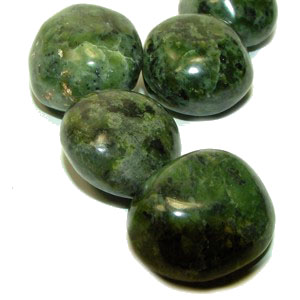
Today Jade is still valued for its beauty. Its many colors are appreciated, but it’s the emerald green color that Jadeite produces so well, that is highly sought after by artwork collectors. This emerald green Jade called “Imperial Jade” is colored by chromium. Other colors are influenced by Iron (green and brown) and Manganese is thought to produce the violet colors. Nephrite is usually only green and creamy white, while Jadeite can have the full range of Jade’s colors.
Jadeite is rarer than Nephrite and is therefore regarded as more precious. At Myanmar the annual “Gems, Jade and Pearls Emporium”, blocks of Jade in all sizes are auctioned. When purchasing the raw materials, the dealers need to be fairly lucky, since the nodules, blocks and fragments are sold either whole or after having been cut into slices, and there is only a very small window, the result of some initial grinding. So the buyer cannot see exactly what is hidden on the inside whether a valuable green Jade, or an almost worthless, speckled or streaky material. It is not until the cutting process begins that the real quality is revealed.
In the Jade-cutting centers of Canton, Beijing and Hong Kong, the raw material is processed with carborundum and diamond powder. Since Jade is, as a rule, not transparent, but has a fine luster, the cabochon is the form best suited to it. Thin slivers, which can be worn as pendants, and Jade bracelets are also popular. Round, cylindrical and flat shapes can be combined to make attractive necklaces. Traditionally, Jade is processed into slender figures, filigree images or thin-walled vessels. This is sometimes erroneously referred to as Jade carving. Unwanted material is in fact removed during the cutting process, and the stone is subsequently polished. Here once again we see the subtle difference between Nephrite and Jadeite: while polished Nephrite has a surface with a resinous luster, the glassy luster of Jadeite after polishing seems to shine almost like that of a mirror.
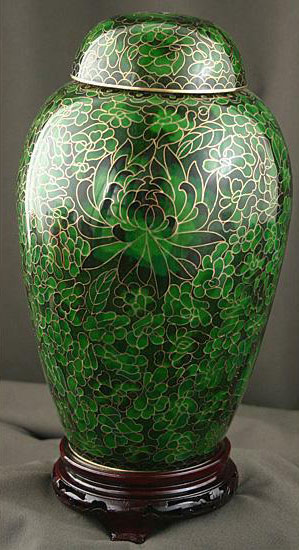
What Distinguishes Good Jade?
For collectors as well as jewelry lovers, Jade is a fascinating gemstone. In Asia, above all, it is collected as an antique. Besides the quality of the gem and its processing, religion and faith also play an important role. In the West, many people prefer to collect Jade in the form of snuff-boxes, cigarette holders, small bowls or rings.Since each collector has his or her own taste and his or her own likings with regard to color, style and shape, it is no easy matter giving definite advice on the purchase of Jade objects.
However, Jade is, at the same time, a wonderful gem, not only in its traditional guise, but also in more modern designs. Especially in recent years, creative jewelry and gemstone producers have come up with some wonderful, up-to-date jewelry design, thus sprucing up the image of Jade, which had had rather a traditional character for quite some time.
In general, the value of Jade is determined according to its color and the intensity of that color, the vivacity and texture, and its clarity and transparency. Likings for particular colors vary very considerably from region to region and culture to culture. In green Jade alone, the connoisseurs differentiate between seven main qualities, from the intense, even green of imperial Jade, via apple green and spinach green, all the way to the lighter and to more heavily speckled shades of green. These special nuances often overlap and can hardly be recognized by the untrained eye. In the USA and Europe, emerald green, spinach green and apple green are regarded as particularly valuable. In the Far East, on the other hand, pure white or a fine yellow with a delicate pink undertone is highly esteemed. In the world of jewelry, the fine violet nuances of lavender Jade are very popular. It is however the rare, emerald green of imperial Jade, which shines through at the edges, a color of incredible depth, which fetches the highest prices. Unfortunately, since not only good and natural Jade is offered for sale, but often fake or poor-quality products or stones which have been colored or otherwise treated, it is advisable to buy good Jade only from reputable dealers and jewelers, whether the purchase is being made for a collection or as an individual piece of jewelry.
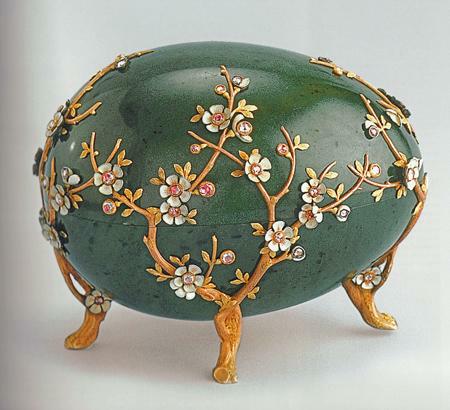
Jade has been known and treasured for more than 7,000 years. In prehistoric times, jade was used in many parts of the world for arms and tools because of its exceptional toughness. For over 2,000 years, jade was part of the religious cult in China and mystic figures and other symbols were carved from it. In pre-Columbian Central America, jade was more highly valued than gold.
But only in 1863 was it discovered that jade is actually not a single mineral. What was traditionally called jade is in fact two separate and distinct minerals: jadeite and nephrite.
Nephrite is the more common form of jade. Nephrite ranges in color from mid to dark green or grey-green, but it can also be white, yellowish or reddish. Nephrite is slightly softer than jadeite; nephrite is 6-6.5 on the Mohs scale, while jadeite is 6.5-7. They have quite different chemical compositions as well: nephrite is a calcium magnesium iron silicate while jadeite is a sodium aluminum silicate. The two minerals also have different densities. Jadeite has a density of 3.30-3.38 while nephrite is less dense at 2.90-3.03.
The two varieties of jade even have different crystal structures. While jadeite's structure is an arrangement of grainy crystals, nephrite is made up of fibrous crystals that interlock in a matted texture. These densely packed and interwoven fibers are extremely resistant to fracturing. So while jadeite is the denser and harder jade, nephrite is actually the tougher of the two.
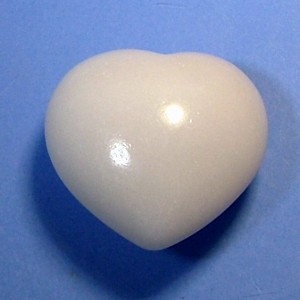
All of the traditional Chinese jade is nephrite, since there are large deposits of nephrite in China, but no jadeite. Jadeite first came to China from Burma in the 18th century. Before the introduction of jadeite, the Chinese tended to value translucent white nephrite. But the jadeite from Burma came in a wider range of colors, including green, lavender, yellow, black and white. The rarest and most valuable jadeite is the imperial jade, colored by traces of chromium. It has color and transparency rivaling fine emerald, though imperial jade is slightly more yellow in tone. In fact the revered Emerald Buddha in Wat Phra Keow in Bangkok is believed to be composed of fine jadeite, not emerald.
The most prized of the jades, the so-called "Chinese jade" jadeite) is emerald green and so beautiful and rare that it has become exorbitantly expensive. In fact, jade is a good investment only if purchased at a reasonable price. A sound policy is never pay more for Chinese jade than you would for an emerald.
Jadeite deposits are principally found in upper Burma. Other deposits are found in Japan, Canada, Guatemala, Kazakhstan, Russia and California. Nephrite deposits are found in China, Burma, New Zealand, Australia, Brazil, Canada, Zimbabwe, Russia, Taiwan and Alaska.
Liked this article? Dive deeper into personal growth and wellness! Check out CrystalWind.ca for spiritual wisdom or explore AromaWorx.ca for natural well-being tips. Spread the positivity—share this with friends on their happiness journey!
Let’s Chat! Drop Your Thoughts Below! ![]()
Latest Articles

Crystal Healing
Imagine a world of inspiration and healing, free for all—made possible by YOU!
Donate Now—Ignite the Magic at CrystalWind.ca!

Epilepsy - Finding A Cure
Your donation can make a difference!
Help us find a cure – donate now!
Crystals In Depth
Crystal Tools
Unlock Your Light: Join Lightworkers Worldwide on CrystalWind.ca!
Crystal Skulls
Follow Us!
Featured This Month
Libra’s Featured Stone - Kyanite
Kyanite Birthstone: Libra Planet: Venus Element: Air Chakra: Throat Read more
Ducks Fly Moon
Raven - Bloodstone Jasper - Mullein - Brown September 23 to October 23 The D... Read more
Mabon in Modern Times: Fresh Takes on the Au…
The Mabon season begins somewhere around the 21st-22nd of September and cont... Read more
Black Tourmaline
The Negativity Remedy Stone Black Tourmaline (Schorl) is one of the best st... Read more
Mabon Magic: Ideas For Fall Decoration And R…
Welcome (almost!) to Fall! We’re turning the Great Wheel once again, toward ... Read more
Autumn Equinox
The Autumn Equinox is a time of harvesting and preparation. It is a time to ... Read more












































































































































